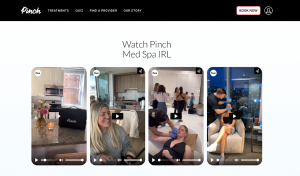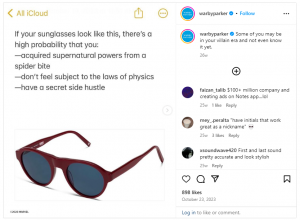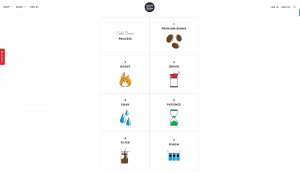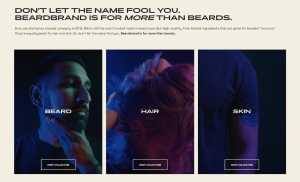The Art of Storytelling in Content Marketing: 8 Effective Tips + Examples

Storytelling is an incredible way to create deeper, more meaningful connections with your target audience. It helps you convey your brand’s personality, values, and messages in a more relatable manner.
In a world where your leads are constantly bombarded with thousands of messages as soon as they go online, in order to stay memorable, you need to stand out. By differentiating your brand with storytelling, you can increase engagement as well as conversion rates. You can also expect your content to become more shareable and likable.
Here are eight effective ways to tell great stories with your content marketing, along with an example of each:
Understand Your Audience’s Pain Points
In order for your stories to truly resonate and make their mark, you need to understand what makes your audience tick, so to speak.
Take some time to consider the main pain points you’re able to solve. What kinds of solutions do you offer, and how do they improve the lives of your leads? Why should they care about them? How can you make them see the value of your offer?
Once you understand the problem, you can craft a story that will effectively address it. Remember to first take into account the point of view of your target audience, not your own. No one will care about the years it took you to perfect something. They will want to know how it makes a difference in their life.
Alexander Tutoring has expertly honed in on the key issue of their clients: math is boring. It is taught in a dull, uninspiring way that does nothing to inspire most children.
Their story revolves around making math more approachable, understandable, and potentially even fun. They highlight these benefits as opposed to focusing only on their innovative teaching methods.

Source: alexandertutoring.com
Share Your Own Story
Sharing something about yourself can go a long way in helping you connect with your audience. People will have an easier job establishing a relationship with a brand they see as a collection of individual humans who are more or less just like them.
Choose what you want to share carefully. You don’t need to be an open book if you don’t want to. You can only tell stories that are directly connected with your brand and how it makes a difference in your own world. Speak about the challenges you yourself faced and how you overcame them.
You can also share somewhat random facts, like your love of corgis and peanut butter ice cream. It will help humanize you. Just make sure your messaging does not sound overly casual.
Sean, the founder of Breaking Eighty, has done a great job of telling his own golfing story and tying it to the blog he created over a decade ago. He has channeled his own frustrations into helping others, which is likely to resonate very well.

Source: breakingeighty.com
He has also taken the time to answer some of the questions he most often sees, making it even easier to get to know him.
Ask Customer to Share Their Stories
You can also ask your customers to share their own experiences and connect them to your brand. You don’t necessarily need to ask for a testimonial. Ask people to explain what led them to come to you.
Your goal is to humanize your brand and showcase some of the difference you have made in people’s lives. Not to film an advert.
Bay Alarm Medical have done a great job with their videos for example. They’ve spoken to customers who eloquently explain the concerns they had before purchasing a medical alert system. Their experiences of helplessly waiting for someone to arrive after they took a tumble will easily resonate.

Source: bayalarmmedical.com
You can also share case studies that showcase the results your product or service has achieved for someone. Telling it as a story will not only make it more digestible but also help readers imagine themselves achieving something similar.
Do It with a Video
Video is an incredible format for telling engaging, captivating stories. It gives you practically unlimited creative freedom, and you can film any story that comes to mind.
Video is infinitely more relatable than text, as it allows your audience to hear and see you. All you have to do is figure out what you want to show.
Pinch features a series of Tik Toks on their homepage that encapsulate the key qualities of their brand. They will come to you, the procedure is not painful, and their team is great. You can also see the results of their customers in a very organic, non-advert way.

Source: bookpinch.com
Their casual approach to storytelling is great for lifestyle brands. You can, of course, film more professional clips, where you show how to use your product, or speak about a topic your audience cares about.
Behind-the-scenes videos are also very popular, as they provide a glimpse into the effort it takes to make a product or deliver a service. It also lets you showcase the personalities of your staff.
Experiment with different video formats and topics until you figure out what your audience engages with the most.
Find Your Sense of Humor
Wit and humor are an important part of storytelling. They will showcase your personality better, and they can help you connect with people easily. All you need to do is be very careful about the types of jokes you make.
Start by considering what your brand is really like. Think about questions such as:
- What do you genuinely want to represent?
- What does your audience like and dislike?
- What references will they understand?
- What do they do with their time?
Don’t make disingenuous comments or try to be funny when you really aren’t feeling the joke. Don’t force humor where it won’t naturally go. You don’t have to make your audience laugh all the time.
Warby Parker for example shares a wealth of eyewear related humor on their social media. They are witty and funny, and can even make themselves the but of the pun. They have found a great way to connect the joke with the product itself, and the product to a variety of pop culture references.

Source: instagram.com
Tie Your Story to the Impact You Make
Storytelling has the power to shape the world and move mountains. You can use it to get people passionate about a cause or to shine a light on issues and injustice.
You can also leverage it to show your customers what you care about and the impact you hope to make on the world.
The key here is not to brag or sound too proud of yourself when telling this story. You want to engage your audience and get them to care about the same causes and changes. You are not merely trying to win some PR points.
High Brew Coffee, for example, tells a great story about the brand. They focus on their spirit of adventure and how the product impacts their lives. They describe the process of producing their coffee, which highlights their commitment to excellence.

Source: highbrewcoffee.com
They also showcase how they partner with the families who produce the coffee beans they use and why it matters. It becomes clear that buying one of their products supports a family in Columbia.
These are the kinds of stories that inspire customers to stay loyal to a brand whose causes they believe in.
Find a Voice and Stick to It
Finding your unique and original voice is an important aspect of storytelling you shouldn’t overlook. It’s not about sounding like no one else before or after. It’s about striking the right balance between your personality and your words and visuals.
Yet again, take a moment to consider how you want to be perceived. Are you edgy and grunge-y, or are you laid back and bubbly? As a brand owner, some of your own personality will likely translate to your business.
Don’t be afraid to speak in a voice that sounds genuine to you, even if other brands in your niche sound completely different. “Incorporating event photography can be an excellent way to visually convey your brand’s unique personality and storyCustomers can easily recognize authenticity, and they are highly likely to reward it.
Check out Beardbrand. They are unapologetically themselves, and aren’t afraid to speak their mind. Their brand voice is direct, clear and there is no nonsense about it. They are honest and don’t use any fluff in their messaging.

Source: beardbrand.com
Grow as You Go
Finally, don’t forget that you need to adapt your stories as you grow and as the world changes. You don’t necessarily need to completely rebrand yourself when you become more popular. Just change the elements of your messaging that no longer work, or speak about new challenges as they arise.
Dove is a great example of keeping up with the times. Their Real Beauty campaign was originally launched two decades ago, and they have since taken into account the rise of social media, editing software and cyberbullying.
Today they are addressing the challenges AI poses to confidence and beauty, and tell fresh stories that keep up with the latest trends in their industry.
Wrapping Up
Before you decide which of these storytelling tactics is most appropriate for your brand, take a moment to analyze your current content marketing efforts. What is your current voice? Do you need to adapt it?
How is your audience reacting to your messaging? What kinds of stories do they engage with the most? What emotional responses are you hoping to inspire?
Think about the best way to approach your audience while also staying true to your brand’s core values and its essence. Only then will your stories be truly effective.
